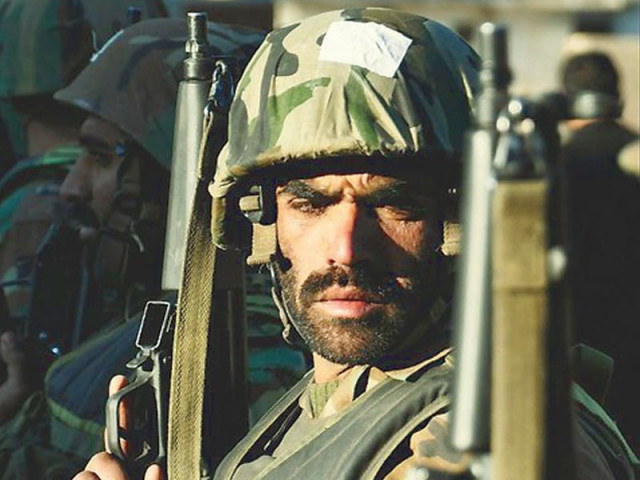
In early December 1971, shortly after midnight, a column of Indian infantry was moving towards the front to reinforce a position that was under attack.
Suddenly, the silence of the night was broken as sweeping machine gun fire came in from the flanks. Within minutes of the attack, the entire column had perished.
In all three cases the phantom soldiers who conducted these attacks were the chosen ones of the Pakistan Army — commandos of the Special Services Group (SSG).
They struck as if out of nowhere and then disappeared into the darkness like ghosts. Raised in 1956 by Major General Aboobaker Osman Mitha with the mandate of specialising in asymmetrical warfare, the SSG has since gone from brigade to division strength, and now has about 3,000 active members.
Until the late sixties, the SSG had maintained a low profile, as befits a force that relies on stealth and secrecy. But when it was decided to raise its profile by sending a contingent to participate in the Republic Day parade in Rawalpindi, few within the SSG opposed it.
The few who did dissent were overruled in any case. Eventually a compromise was reached and when the actual event took place, the SSG was seen wearing their signature maroon berets and running at a steady pace while chanting ‘Ali, Ali’ rhythmically.
By contrast, the other army contingents marched instead of running. And so it remained until the parade itself was suspended indefinitely for security reasons.
Skilled in the use of weapons, the SSG are trained to handle machine guns, sub-machine guns and pistols as if these were extensions of their bodies.
They are trained to fire from the hip with speed and accuracy, even when on the move. Experts in unarmed combat, they are deadly even with no weapons other than their hands and feet.
Given their training in unconventional warfare, the SSG also learn how to guard against its use by the enemy. As such, they are the unit of choice when it comes to both guerrilla and anti-guerrilla operations.
But of all the varied operations the SSG are called on to conduct, the most demanding are those that are carried out deep behind enemy lines — cut off from supplies, support or even an escape route.
Such operations require the highest state of physical and mental toughness, resourcefulness, and the ability to remain cool and motivated far beyond the bounds of conventional human endurance.
Selection for service with the SSG is, therefore, tough. Volunteers from all over the army apply but two-thirds are rejected during the initial selection phase, and one-third of the selected fall out during the training phase due to lack of physical and mental resilience displayed during the training.
Trainees have to undergo forced marches in which they have to cross 36 miles of rugged terrain in nine hours while wearing full combat loads.
Typical exercises involve round-the-clock movement for five days and nights without sleep, while carrying only two days worth of food and water.
Once that runs out, they must live off the land and the few villages in the area are kept under surveillance by the trainers.
If captured, they are thrown into the dungeons of Attock Fort and subjected to a gruelling process of interrogation. Among those who break down during the five-day exercise, the common refrain is “SSG dozakh hai” (SSG is hell).
Those who finally make it, earn the distinction of wearing the maroon beret and the coveted SSG badge on their chest. These men are too precious to be wasted in the activities of conventional soldiers, yet even those who should know better continue to misuse them for guard duties and personal security functions.
Occasionally SSG troops tend to misuse their skills as well, which is exactly what happened when one of the SSG units was due to be inspected by a GHQ team.
There was a growing sense of anxiety in the unit as many of their jeeps had become unserviceable for want of spare parts which were not forthcoming. Faced with this problem, they solved it in true SSG style. A night before the inspection, a few men stealthily penetrated the motor park of an artillery unit some 20 kilometres away, and went about removing the required parts from the jeeps parked there. Having completed their job quickly and in silence, they returned to base and used the stolen parts in their own jeeps. Lo and behold, when inspection time came around, the unserviceable jeeps were up and running.
The following morning, when the commanding officer of the artillery unit learned that his jeeps had been mysteriously cannibalised, he nearly collapsed and had to undergo overnight hospitalisation.
SSG commandos are trained — in the words of Hannibal — to “find a way or make one”. They had done just that, but GHQ was not amused to say the least.
Whether the target is automobile parts or an enemy position, an SSG operation is typically conducted in five phases: planning, preparation, infiltration, attack, and exfiltration.
Of course, while it is also a truism that “no plan survives contact with the enemy,” the single greatest factor in the success of an SSG operation is the achievement of surprise.
When the plan is not based on precise and accurate intelligence the element of surprise is compromised, as happened to the SSG operations in September 1965 against the Indian airbases at Pathankot, Adampur and Halwara. Hastily planned and based on outdated intelligence and maps, these operations all ended in disaster.
The topographical changes that had taken place in the area of operations were missing from the maps.
The result was that most of the commandos landed in settlements that were not supposed to be there. As a consequence, within minutes of their landing, the alarm was raised. With the element of surprise lost, the odds were now stacked against them.
The next 48 hours saw them fighting running battles with their pursuers until their ammunition ran out. The cream of the army had been sacrificed in a needless operation against targets that were subsequently taken out by the PAF many times over.
SSG teams infiltrate behind enemy lines either by land, air or sea. Insertion by land is hazardous and time-consuming as it involves crossing the frontlines, whereas the air option, in which the preferred means is by helicopter, is the least hazardous and quickest.
But when helicopter insertion is precluded, freefall parachutes are used to make either HALO (high altitude, low opening) or HAHO (high altitude, high opening) jumps. HALO jumps are made inside the enemy territory, with the parachute being opened low, while HAHO jumps are made inside one’s own territory close to the border, with the parachute being opened high, and then manoeuvred towards the area designated for landing inside the enemy territory.
Having landed, whether by helicopter or parachute, they begin the final approach to the target, and once they get within striking distance, all hell is let loose. Minutes later, they are gone as suddenly as they had come, leaving behind a trail of blood and destruction.
Now begins exfiltration, the most challenging of all phases. The quickest way is extraction by helicopter. But the real challenge, especially in the plains, is when this option is ruled out.
It is now that their physical and mental toughness, resourcefulness and the ability to remain cool and motivated come under a severe test, as they struggle to get back across a broad expanse of hostile territory with the enemy in hot pursuit.
The SSG is a small force, but when employed correctly it can inflict damages on the enemy out of proportion to its size. When viewed against the fact that in most conceivable scenarios the Pakistan army will have to fight a future conventional war while outnumbered, the SSG becomes a critical force multiplier.
Therefore, it is best used in support of the army’s offensives to create a strategic impact on the enemy that can then be exploited by conventional forces.
In 1965, for example, if the army had followed up Operation Grand Slam with another offensive in the Ravi-Chenab corridor, the SSG could have been employed simultaneously against the Headworks on River Ravi and the crossings on River Beas ahead of the offensive.
These actions would have isolated the Ravi-Chenab corridor and delayed the induction of Indian army formations into the Ravi-Beas corridor, thus giving a decisive lead to Pakistani war directors in all the dimensions of operational strategy.
Having missed the opportunity to win the war in 1965, they should have atoned for it by doing the same in October 1971 when the build-up of Indian forces against East Pakistan was well underway. Unfortunately for Pakistan, they missed this opportunity too.
In the two wars directed by them, the performance of Pakistan’s military planners was marked by a lack of imagination and daring. Stated simply, they had the force but did not know how to use it. Fortunately for Pakistan, the Indian captains of war were equally, or even more, incompetent.
The bane of any SSG operation is faulty intelligence and a lack of effective follow-up by regular troops. An example of the latter can be found in the frozen wastes of Siachen.
The Indian Army built up a large force to defend the 80 kilometre-long Saltoro Range ridgeline (the gateway to Siachen Glacier), and since then, the Pakistanis have sought to gain a foothold on the ridge line, with the Indians successfully denying it.
In early April 1987, after several attempts had failed, a small force consisting of about a dozen SSG commandos, using ropes and ladders, went up a vertical cliff and occupied a position at over 21,000 ft that dominated the Indian positions at Bilafond La. They named it Quaid post.
The Indian Army made several attempts to evict the commandos but each time they were repulsed with heavy casualties.
However, on June 25, 1987, they succeeded in taking the post as the commandos had run out of ammunition and could not be resupplied for the base supporting them had come under fire. With the only foothold on the ridgeline lost, the Pakistan Army launched a major attack in September to get to Bilafond La, but was repulsed.
Operation Silence, the SSG operation against the Jamia Hafsa/Lal Masjid complex was ultimately a victim of poor intelligence, quite unlike Operation Nimrod — the British SAS (Special Air Service) operation in May 1980 against six terrorists who had seized the Iranian embassy in London and taken 26 people hostage.
The SAS had complete information about the terrorists, hostages and the 50-room, six-storied embassy, and had even carried out rehearsals on full size replicas. The result was that the operation involving 50 SAS troops took only 17 minutes to eliminate the terrorists and rescue the hostages.
In glaring contrast, Operation Silence was launched on what was, at best, sketchy information about the number of people holed up inside the complex. Even today a controversy is raging about the number of people present in the complex at the time of the operation.
How many were there and how many among them were hostages? If there were hostages, were they lodged separately, and if so, where? How many militants were armed and what weapons did they have? Where were the militants deployed?
These questions must have been raised by the SSG, but were clearly left unanswered. The fact that none inside the complex survived the attack, clearly shows that the SSG was given to understand that everyone inside was armed and dangerous.
That those inside were able to resist the SSG for so long and inflict casualties on them, is a testimony to their preparedness and grit, and the fact that the SSG cleared the complex despite fighting blind is a reflection on its ability to deliver even in adverse conditions.
But the SSG’s Zarrar company, which had carried out the attack, would soon face retaliation of a most unexpected nature.
The militants contrived a way to hit the company at its base in Tarbela — most likely using the help of their sympathisers in the base itself.
These sympathisers acquired C4 plastic explosive from the company’s armoury, placed it in the mess, and detonated it by remote control, killing 22 soldiers.
As a consequence, military installations across the country became vulnerable, as shown by the attacks on GHQ, and the Mehran and Kamra bases among others.
The vulnerability is very real, as is the sense of fear and uncertainty in the minds of the commanders. But here too, the special skills of the SSG can be put to good use.
After the 1965 war, Air Marshal Nur Khan had ordered upgrades in the security of all PAF bases and raised units of Ground Combateers (GCs) for this purpose.
To test their effectiveness he employed the SSG to carry out mock attacks against the facilities. Valuable lessons were learnt by the PAF, which were implemented and then retested, with better results for the PAF.
Given the vulnerability of military installations across the country, the Service Chiefs, who must have developed plans for the security of their installations, should also ask the SSG to test the efficacy of their plans. The results would shock them.
The 2009 army operations in Swat and South Waziristan succeeded in ending the insurgencies there, but were unable to prevent them from escaping to other places in the region.
After successfully relocating, these militants have managed to continue to not only stage hit-and-run attacks like the one on Malala and her friends, but also to fight pitched battles like in Bajaur last month.
How long it will take for the army to crush the insurgency that has enveloped the country and threatens to undermine its foundation, nobody can surmise, least of all the army.
But what one can say with certainty is that the war against the insurgency in the tribal areas will become a war without end, unless the requisite amount of force is employed.
This must be in line with a strategy that seeks to isolate the theatre of operations prior to the offensive in order to prevent the enemy from ingressing into it or escaping from it.
Again, this cannot be done without a holistic strategy that includes the judicious use of the SSG.
In Operation Rah-e-Raast in Swat, the notably successful action by the SSG was its surprise assault on the Peochar heights, a dominating position occupied by the insurgents.
Descending from helicopters, the commandos quickly secured the heights, then attacked downhill, forcing the insurgents to descend into the waiting arms of the infantry in the valley. This ultimately led them to flee and live to fight another day.
In the two Waziristans, the SSG’s employment started in 2002, leading up to Operation Rah-e-Nijaat in 2009. During this period they conducted several operations in conjunction with elements of 12 Corps against foreign fighters and their local partners, who, in almost all cases, managed to get away.
This failing, like so many others, resulted from inaccurate intelligence and the loss of surprise caused by the accompanying infantry.
During Rah-e-Nijaat, the SSG was mostly employed in support of the infantry columns that advanced from three directions to secure the ‘critical space’ of the insurgents in the triangle formed by Makeen-Ladha-Sararogha.
The well advertised Rah-e-Nijaat and the conventional strategy adopted for it compromised the key element of surprise, thus giving enough time to the insurgents to escape to other places in the region.
Had the SSG been employed to open the campaign by seizing the heights dominating Makeen, Ladha and Sararogha in a surprise heliborne assault, the bulk of insurgents would have found it difficult to escape.
Special Forces are precision instruments. While surprise is their main weapon, their success also depends on the quality of intelligence, since their operational plans are based on it.
In a war against insurgency they are the only instrument of the army that can create fear and uncertainty in the minds of the insurgents, a situation that should repeatedly be exploited by the army to break the militants both mentally and physically.
There is no place for orthodoxy and inflexibility in war, least of all in this war. You adapt or you die.
*The author is a former member of the SSG
Published in The Express Tribune, Sunday Magazine, November 11th, 2012.
Like Express Tribune Magazine on Facebook and follow at @ETribuneMag
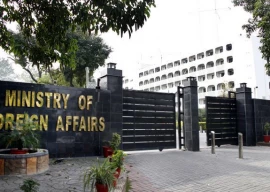

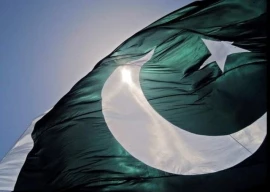
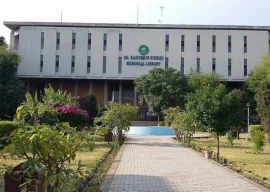
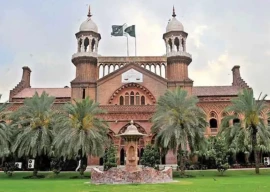


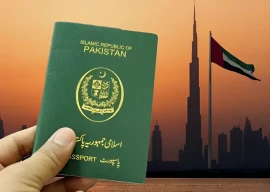
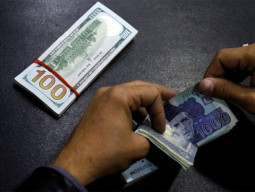

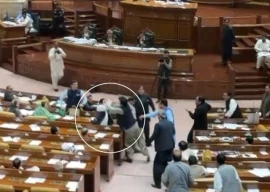
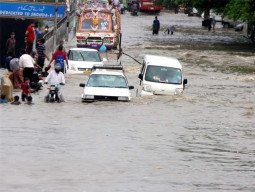







COMMENTS
Comments are moderated and generally will be posted if they are on-topic and not abusive.
For more information, please see our Comments FAQ